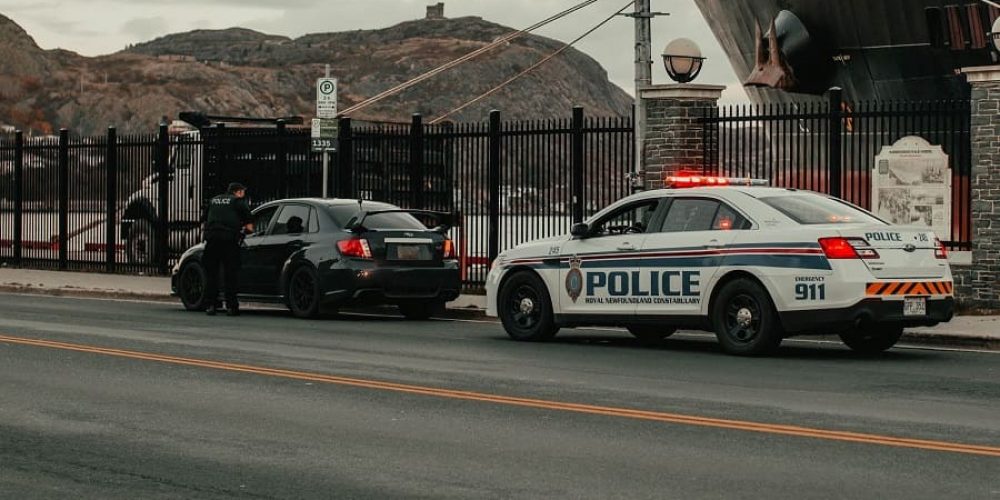You are blissfully cruising down the highway when you hear the unwelcome sound of a siren and the sight of flashing lights behind you. None of us like to see and hear a police car asking us to pull over, however, it is a common experience on the road. Let’s face it, no driver is 100% perfect — and for one reason or another, you have or will be stopped by traffic police.
Whether you’re on the right or have broken the law, knowing what to do when pulled over by traffic police can save you a lot of trouble.
Remember, being stopped doesn’t necessarily mean you have committed an offense.
Sometimes, traffic police officers conduct routine checks to ensure drivers have all the necessary documents and follow traffic laws.
What to do when you get pulled over by traffic police
Pull over right away
Immediately after you notice police emergency lights and sirens, pull your vehicle to the right quickly but safely. If you need to change lanes, use the turn signals to communicate.
Additionally, do not disrupt traffic by stopping in the middle of the road. Instead, find a safe spot by the roadside and pull over.
Stopping your car immediately doesn’t mean you’ve done something wrong and or an admission of guilt. It means you’re alert to your surroundings and obey the traffic police command to stop.
Don’t be tempted to run, triggering a chase. While it may look daring and exciting in the movies, it is not just a criminal act in real life, but it also puts other motorists, pedestrians and any passengers you are carrying at serious risk. Failing to stop for traffic police or evading police is punishable by fines or imprisonment, which vary from state to state.
So even if you believe the traffic officer has no reason to pull your car over, just slow down and stop your vehicle when asked to.
Remain in your vehicle
Once you stop safely, do not attempt to leave your vehicle or approach the police officer, as this can be perceived as a threat.
Remember, the police officer has no idea what they are walking into when they ask you to stop. Consequently, they may quickly react to your movements which could accidentally harm you.
Calmly remain in your vehicle and wait for the traffic police to come to you. Keep in mind that the officer might take time to exit the police vehicle and approach yours. Mostly, they’ll be communicating with other police officers, notifying them about the stop.
Turn on the interior light and keep your hands easily observable
If you’re being asked to pull over at night, you may want to turn on interior lighting. Remember, driving at night while the interior lights are on is hazardous as the dome light affects your field of vision.
A lit vehicle cabin will eliminate the officer’s concern about possible threats within your reach.
Additionally, keep your hands where the approaching officer can easily see them — preferably on the steering wheel. Do not reach under the seat or place your hands in the pocket as the officer might think you’re reaching for a weapon.
Provide documentation upon request
Mostly, the traffic police will ask for your license, registration, and proof of insurance — you should always carry these documents with you whenever you’re driving.
When requested, inform the traffic police where you keep your documents in your car before reaching out to get them. You don’t want to initiate movements that might trigger suspicion.
Gather the necessary documents from your glove compartment or wherever you keep them and hand them over to the officer. If you have a missing document, inform the officer and explain where or why it is missing.
The reason for requesting your license, registration, and proof of insurance is to obtain information about your and your vehicle.
Ask why you’re being pulled over
After the traffic officer has verified your license, registration, and proof of insurance, ask them to explain why they stopped your vehicle. A traffic officer can pull you over for various reasons, including;
- Speeding
- Improper lane changes
- Tailgating
- Driving while texting or calling
- Minor infractions like darkly tinted windows, broken tail lights, etc.
Regardless, the officer must be clear with the reason for stopping you.
Do not argue
If you have a traffic offense, the officer can either give a verbal warning or write you a ticket. For a verbal warning, thank the officer and assure them that you’ll correct the driving mistake.
However, the officer may want to know why the driving mistake occurred.
For instance, if you’re speeding, explain why you are rushing. Be honest with your explanation and always respect the traffic officer — this will minimize your chances of getting a ticket.
If you’re issued a ticket, do not argue with the officer. Instead, accept the citation even if you’re unhappy. Accepting a citation is NOT an admission of guilt. You have an opportunity to contest the citation in court after the incident.
Continue your journey
When the traffic officer returns to their patrol vehicle, get back on the road and continue your journey. Please observe any traffic rules to avoid another traffic police pullover.
Final thoughts on what to do when stopped by traffic police
Being asked to pull over by traffic police is not a new experience for most drivers. It often happens due to mistakes like speeding, driving while using your phone, and improper lane changes.
So, when asked to stop, slowly and carefully pull over on the right side of the road and remain calm inside your vehicle. Place your hands on the wheel and turn on the interior lighting.
Provide any documentation upon request and avoid arguing with the officer.
Remember, you can always use traffic violation defense attorneys to challenge your ticket or citation in court.




Comments 0